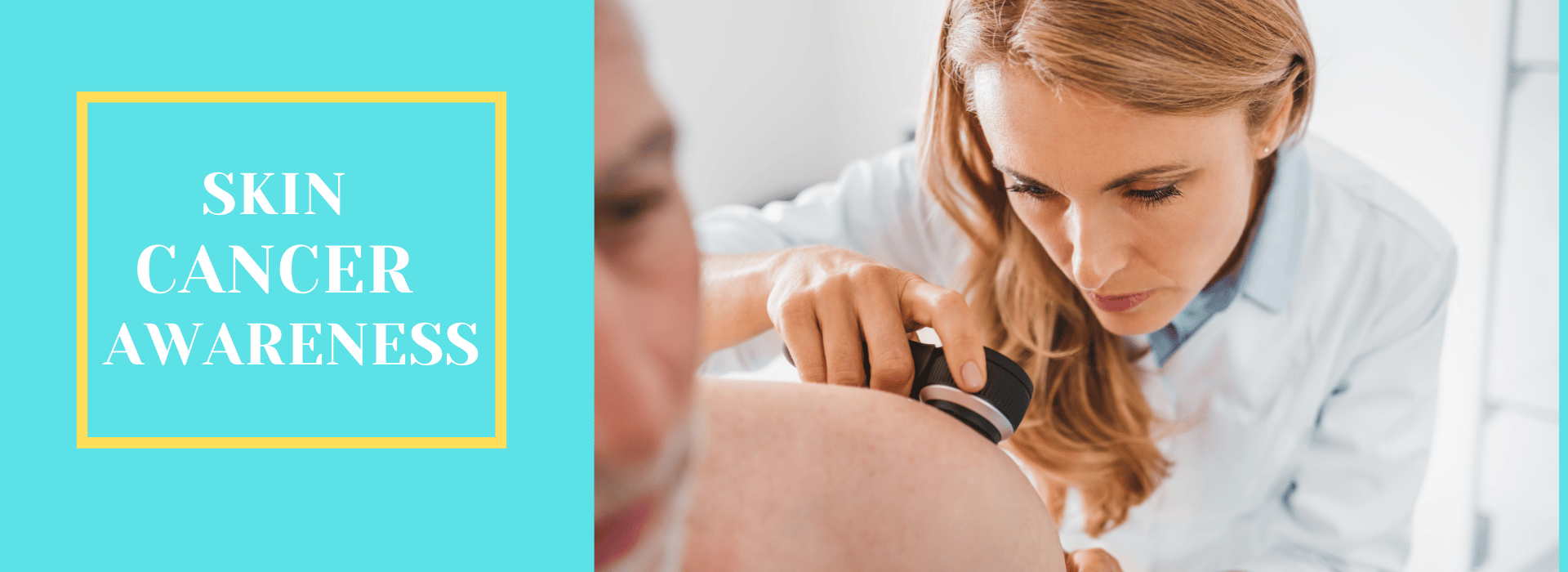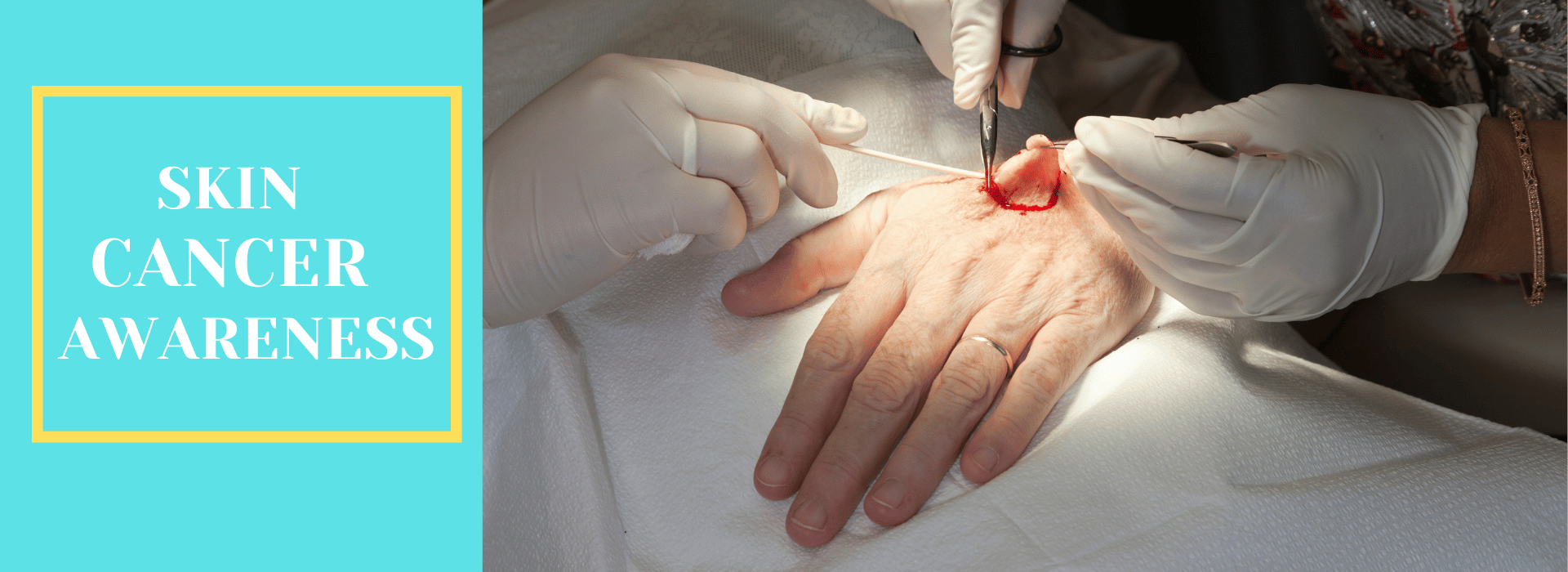What Is
Nodula Melanoma?
What Is Nodula Melanoma?
Nodular melanoma is a highly aggressive and potentially deadly form of skin cancer.
It's one of the various types of melanoma, which is the most serious type of skin cancer.
Understanding its characteristics and symptoms is crucial for early detection and treatment.
Characteristics of Nodular Melanoma
Growth Pattern:
Unlike other melanomas that typically grow horizontally across the skin (radial growth phase), nodular melanoma grows vertically downwards into the skin (vertical growth phase) from the start.
This makes it more dangerous, as it can quickly reach deeper layers of the skin and spread to other parts of the body.
Appearance:
Nodular melanomas often appear as a new and rapidly growing lump on the skin.
They may be black, but can also be blue, grey, white, brown, tan, red, or skin-toned.
Texture and Shape:
These lesions tend to be firm to the touch and are usually dome-shaped.
Size:
They can grow more quickly than other types of melanomas and are often more than 6 millimeters in diameter (about the size of a pencil eraser) when diagnosed.

Symptoms to Be Aware Of
A New Lump or Growth:
One of the key signs of nodular melanoma is the appearance of a new lump or growth on the skin.
It may seem like a mole initially but differs in its rapid growth and sometimes irregular appearance.
Change in Colour:
The lesion might undergo changes in colour, including becoming darker, or it may have multiple colours.
Bleeding or Oozing:
Nodular melanomas may bleed or ooze, especially if they are bumped or irritated.
Itchiness or Pain:
Unlike other types of melanoma, nodular melanomas are more likely to be symptomatic.
They might itch, feel tender, or cause pain.
Elevation:
The lesion often has a raised, bump-like appearance.
Importance of Early Detection
Nodular melanoma can be more dangerous than other types of melanoma because it tends to grow more rapidly.
This fast growth means it can quickly invade lower layers of the skin and potentially spread to other parts of the body, making treatment more challenging.
Therefore, early detection and treatment are crucial for a better prognosis.
Regular Skin Checks
Given the aggressive nature of nodular melanoma, regular skin checks are essential.
This includes both self-examinations and professional skin exams by a dermatologist.
If you notice any new, changing, or unusual spots on your skin, it's important to have them evaluated by a healthcare professional as soon as possible.
Nodular melanoma is a serious skin condition that requires prompt attention.
Being aware of its symptoms and characteristics, and conducting regular skin checks, can greatly assist in early detection.
If you have any concerns about a spot or lesion on your skin, consult with a healthcare professional or dermatologist promptly.
Early detection and treatment significantly improve outcomes in cases of melanoma.
Who Gets Nodular Melanoma?
Nodular melanoma can affect individuals of any age, gender, or race, but certain factors can increase the risk of developing this aggressive form of skin cancer.
Understanding these risk factors is key to identifying those who are more likely to be affected.
Here are the groups of people who are generally at a higher risk:
Age: While nodular melanoma can occur at any age, it is more commonly diagnosed in older adults, particularly those over the age of 50.
Gender: Men are more likely than women to develop nodular melanoma. This discrepancy may be due to differences in sun exposure habits and protective behaviours.
Skin Type: People with fair skin, light hair, and light eyes have a higher risk of developing all types of melanoma, including nodular melanoma. This is because they have less melanin in their skin, which offers some protection against UV radiation.
Sun Exposure: People who have had prolonged exposure to ultraviolet (UV) light, either from the sun or from artificial sources like tanning beds, are at an increased risk. This includes those who have experienced severe sunburns, especially in childhood.
Family and Personal History: A family history of melanoma increases the risk. Additionally, people who have previously had any type of melanoma or other skin cancers are at a higher risk of developing nodular melanoma.
Moles: Having a large number of moles, especially if they are unusual in size or shape, can increase the risk of developing melanoma.
Geographic Location: People living in areas with intense sunlight, such as near the equator or at high altitudes, have a higher risk of developing skin cancers, including nodular melanoma.
Immune System: Individuals with weakened immune systems, whether due to immune-suppressing medications or conditions like HIV/AIDS, have an increased risk.
Genetic Factors: Certain genetic syndromes and mutations increase the risk of melanoma. People with a family history of melanoma should consider genetic counseling.
It's important to note that while these factors increase the risk, nodular melanoma can still occur in people without any of these risk factors. Therefore, regular skin checks and monitoring for any changes in the skin are important for everyone, regardless of their risk profile.
If you notice a new, growing, or changing lesion on your skin, it's important to consult with a healthcare professional for an evaluation.
What Causes Nodular Melanoma?
Nodular melanoma, like other forms of melanoma, is primarily caused by DNA damage to skin cells, which leads to uncontrolled cell growth. This damage is most commonly the result of exposure to ultraviolet (UV) radiation, either from the sun or artificial sources like tanning beds.
However, the exact causes can be multifactorial and include a combination of environmental, genetic, and individual risk factors.
UV Radiation Exposure: The most significant risk factor for nodular melanoma, as with other skin cancers, is exposure to UV radiation. This can come from direct sunlight or artificial sources like tanning lamps and beds. UV radiation can damage the DNA in skin cells, which can lead to cancerous changes.
Genetic Predisposition: There is a genetic component to melanoma risk. People with a family history of melanoma have a higher risk of developing the disease themselves. Certain genetic mutations, which can be inherited, increase the risk of skin cancers.
Skin Type: People with fair skin, light hair, and light eyes are at a higher risk because they have less melanin in their skin. Melanin provides some protection against UV radiation.
Moles: Having a large number of moles or atypical (dysplastic) moles can increase the risk of developing melanoma. These moles have a higher likelihood of becoming cancerous.
Age: Nodular melanoma is more commonly diagnosed in older adults, although it can occur at any age. This might be due to cumulative sun exposure over time.
Gender: Statistically, men are more likely to develop nodular melanoma than women, though the reasons for this disparity are not fully understood.
Immune System Function: Individuals with weakened immune systems, whether due to immune-suppressing medications, diseases like HIV/AIDS, or other conditions, are at an increased risk of developing melanoma.
Personal History of Melanoma or Skin Cancer: Individuals who have had melanoma or other types of skin cancer previously are at a higher risk of developing melanoma again.
Environmental Factors: Living in areas with high levels of UV radiation exposure, such as near the equator or at higher altitudes, can increase the risk.
Lifestyle Factors: Certain lifestyle choices, such as frequent tanning or inadequate protection against sun exposure, can increase the risk of developing melanoma.
How is Nodular Melanoma diagnosed?
Nodular melanoma is diagnosed through a combination of clinical examination and diagnostic tests.
The process typically involves the following steps:
Skin Examination:
The first step in diagnosing nodular melanoma is a thorough skin examination. This can be done by a dermatologist or another healthcare provider. They will look for any unusual skin growths or changes. Particular attention is paid to any new, rapidly growing, or changing lesions, especially those that are raised and firm to the touch.
Dermoscopy:
Dermoscopy, also known as dermatoscopy, is a non-invasive skin examination using a special magnifying device with a light source. It allows the healthcare provider to see patterns in the skin and pigmentation that are not visible to the naked eye. This tool is particularly useful in distinguishing melanoma from benign moles and other skin lesions.
Biopsy:
If a lesion is suspected to be melanoma, the definitive way to diagnose it is through a biopsy. This involves removing all or part of the suspicious lesion and examining it under a microscope. A biopsy can confirm the presence of melanoma cells and provide information about the type and depth of the cancer.
There are different types of biopsies, such as a shave biopsy, punch biopsy, or excisional biopsy. The choice of biopsy type depends on the size, location, and characteristics of the lesion.
Pathological Examination:
Once a biopsy is performed, a pathologist examines the tissue sample. They assess various factors like the thickness of the melanoma, the rate of cell division, and whether it has ulcerated (broken down on the surface). These factors help in determining the stage and aggressiveness of the melanoma.
Additional Imaging Tests:
If there is concern that the melanoma has spread (metastasized) to other parts of the body, additional imaging tests may be recommended. These can include CT scans, MRI, PET scans, or X-rays, and are used to check for metastasis in the lymph nodes, lungs, liver, brain, or other areas.
Sentinel Lymph Node Biopsy:
In some cases, particularly if the melanoma is of a certain thickness or has other high-risk features, a sentinel lymph node biopsy may be performed. This procedure identifies and tests the first lymph node(s) to which the cancer could spread. It helps in determining whether the melanoma has metastasized to the lymphatic system.
Genetic Testing of the Tumor:
Genetic testing on the melanoma tissue might be done to identify specific mutations. This information can be useful in determining prognosis and in some cases, guiding targeted therapy.
Clinical Staging:
Finally, if melanoma is diagnosed, the doctor will stage the cancer based on the biopsy results, physical examination, and any imaging tests. Staging is a way to categorise the cancer based on its size, depth, and whether it has spread.
This is crucial for planning treatment.

What is the Treatment for Nodular Melanoma?
The treatment for nodular melanoma, like other forms of melanoma, is primarily determined by the stage of the cancer at diagnosis, the size and location of the tumour, and the patient's overall health.
Treatment options can include surgery, targeted therapy, immunotherapy, radiation therapy, and chemotherapy.
Here's a breakdown of the common treatment approaches:
Surgical Removal:
The primary treatment for nodular melanoma, especially in its early stages, is surgical removal (excision). The surgeon removes the melanoma along with a margin of normal tissue around it to ensure all cancerous cells are eliminated. The size of the margin depends on the thickness and location of the melanoma.
For more advanced melanomas, a wider excision may be necessary, and in some cases, skin grafting may be required to close the wound.
Sentinel Lymph Node Biopsy:
If there's a risk that the cancer has spread to the lymph nodes, a sentinel lymph node biopsy may be performed during surgery. This involves removing and examining the nearest lymph node(s) to the tumour. If cancer cells are found in the lymph nodes, additional lymph node removal (lymphadenectomy) may be required.
Targeted Therapy:
In cases where nodular melanoma has specific genetic mutations, targeted therapy drugs can be used. These drugs specifically target the mutations that help cancer cells grow. For example, BRAF inhibitors are used if the melanoma has a BRAF mutation.
Immunotherapy:
Immunotherapy boosts the body's immune system to fight cancer cells. These treatments have been effective in treating advanced melanomas, including nodular melanoma. Drugs known as checkpoint inhibitors, like pembrolizumab (Keytruda) and nivolumab (Opdivo), are commonly used.
Radiation Therapy:
Radiation therapy may be recommended after surgery to destroy any remaining cancer cells, especially if the melanoma has spread to the lymph nodes or other parts of the body. It can also be used to relieve symptoms of advanced melanoma.
Chemotherapy:
Chemotherapy, which involves using drugs to kill cancer cells, is less commonly used for melanoma compared to other cancers. However, it may be an option in advanced cases where the melanoma has spread to other parts of the body and is not responding to other treatments.
Clinical Trials:
Participation in clinical trials can offer access to new and potentially effective treatments for nodular melanoma. These trials may involve novel chemotherapy drugs, targeted therapies, immunotherapies, or combination therapies.
Follow-Up Care:
After treatment, regular follow-up care is crucial to monitor for any signs of recurrence or new skin cancers. This includes skin examinations, imaging tests, and blood tests as recommended by the healthcare provider.
Supportive Care:
Addressing the emotional, psychological, and social impacts of a melanoma diagnosis is also an important part of treatment. Support groups, counseling, and other resources can be beneficial.
| Powered by Kaptol Media


